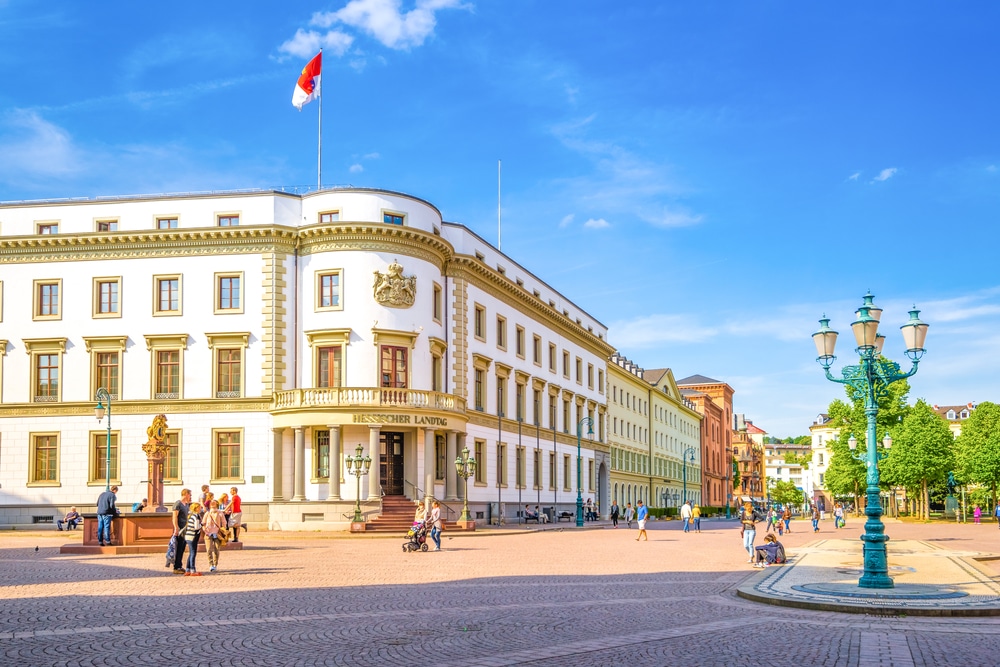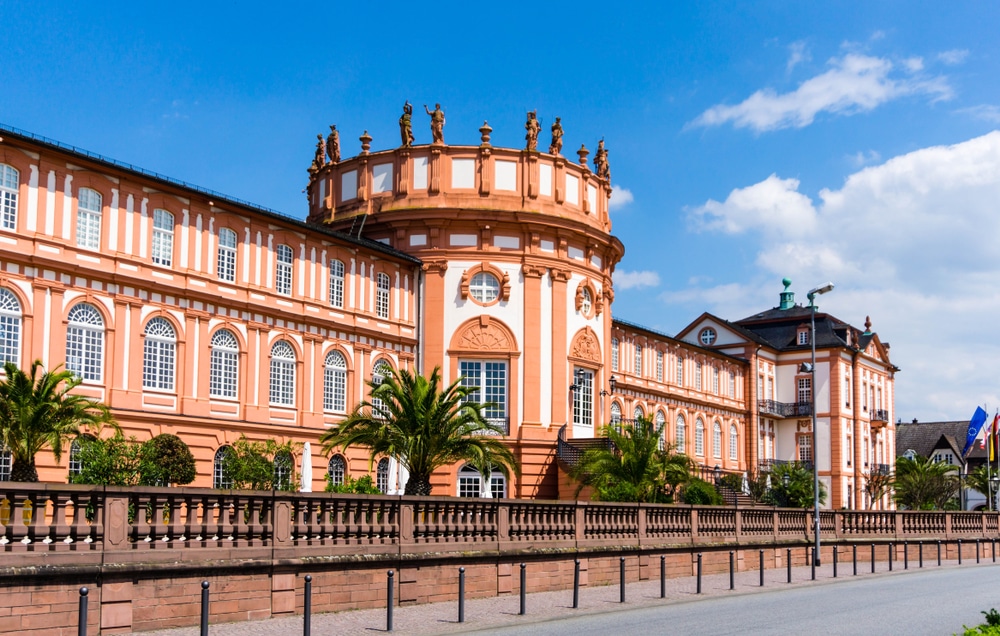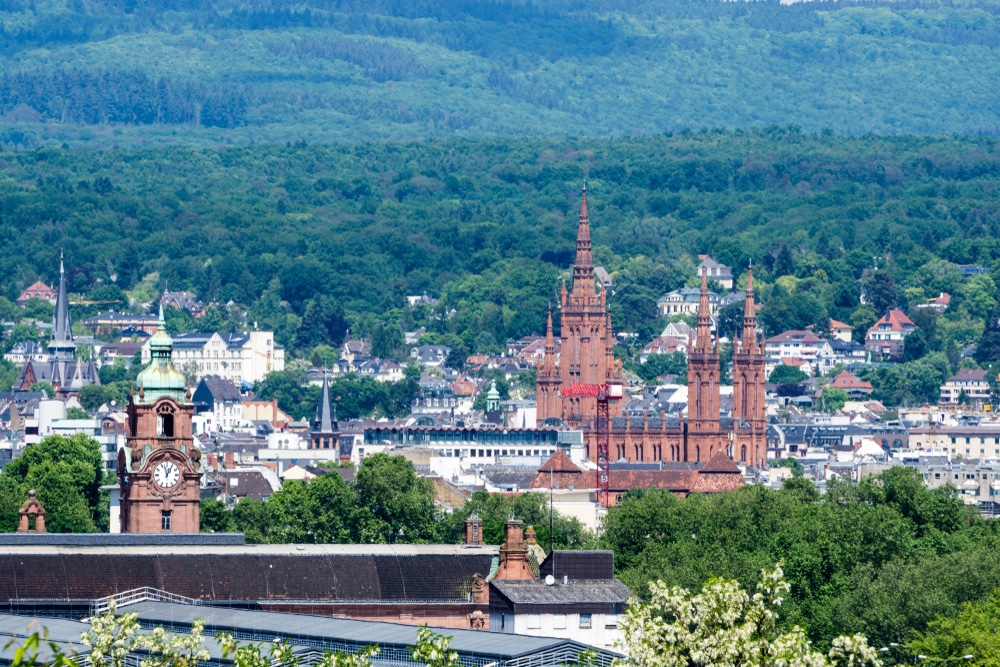City Palace Hessian Parliament
During a visit to Wiesbaden you have the opportunity to explore the eventful history of an impressive architectural monument: The city palace on the market square was once the residence of the dukes of Nassau. Since 1946, the castle has been the seat of the Hessian Parliament. This is the legislative body of the state of Hesse. It was designed by the Lower Saxon architect and town planner Georg Moller.

Art historical significance
In the middle of the 19th century, planning work began for the Wiesbaden City Palace. Following the detailed plans of the architect Georg Moller, court architect Richard Görz built the palace on today's Schlossplatz in Wiesbaden from 1837 to 1841. At the time, Georg Moller was employed as court building director of the Grand Duchy of Hesse-Darmstadt and is still considered one of the most important representatives of classicism in Germany. He planned, among other things, the State Theatre in Mainz, St. Ludwig's Church in Darmstadt and Luisenplatz with the adjoining collegiate building and Ludwig Monument.
During the Second World War, many of his impressive buildings were almost completely destroyed - except for the City Palace in the state capital Wiesbaden! Here, at the end of the war, only minor losses were visible on the outer façade and on the right wing of the building, the former residential wing. For this reason, visitors today have the unique pleasure of being able to view the original room layout and furnishings.
The architectural language, interior design, technology, special features and the type of construction together form one of the most important contemporary witnesses of classicism in Germany. In particular, Moller's technical concepts, such as the iron constructions of the domes and conservatories of the palace, or the high quality of the interior design with stucco marble, porcelain from Meissen and various paintings are considered outstanding for the time. Comparable work of a similar quality and attention to detail can only be found in Hesse today in the Ballhaus of Wilhelmshöhe Palace in the documenta city of Kassel.
An eventful past
The City Palace on the market square in Wiesbaden was initially known as the "Duke's House", as it was to become Duke Wilhelm's new residence. He died before its completion in 1841 and his son Adolf took over his father's inheritance. In 1848, it was the time of the March Revolution, a popular uprising occurred on Schossplatz. 30,000 outraged citizens demanded: freedom of assembly, freedom of the press and public trials. This uprising went down in the history books under the name "Nine Demands of the Nassauers". Duke Adolf then promised the outraged citizens that their demands would be implemented. His reputation rose and he became the longest reigning duke in the country. After the defeat in the war against Austria, he was deposed from office. He went to Vienna until 1890, when he took over as Grand Duke of Luxembourg. Even today the people of Wiesbaden maintain a good relationship with Luxembourg.
Seat of the Hessian Parliament
Today, the historic rooms are available for official receptions and celebrations of the state government. Public concerts are held in the music hall. The buildings adjacent to the palace now house the offices of members of parliament and administrative staff. There are meeting rooms, a large state parliament canteen and rooms for press conferences. In addition, a visitors' gallery has been integrated into the redesigned plenary hall and the information centre provides exciting insights into the history of the Landtag.


